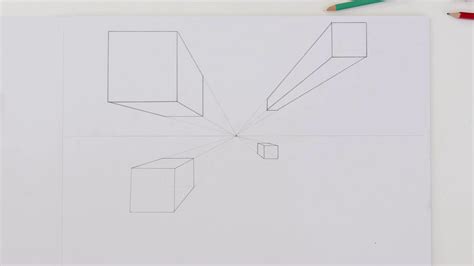Creating realistic and engaging drawings from a top-down perspective requires a thorough understanding of the shapes, textures, and relationships of objects. A stove with pans is an excellent subject for practicing this technique, as it offers a variety of forms and materials to depict.

Perspective in Top-Down Drawing
When drawing from a top-down view, it is crucial to observe the foreshortening of objects. As objects move away from the viewer, their vertical dimensions appear shorter, while their horizontal dimensions remain relatively unchanged. Understanding this principle is essential for accurately representing the depth and spatial relationships in your drawing.
Drawing a Stove from a Top-Down Perspective
-
Begin with a Skeleton: Start by sketching the basic rectangular shape of the stove. Use light, confident lines to establish the overall proportions and orientation. Divide the rectangle into four equal quadrants to create a central focal point.
-
Add Details to the Cooktop: Within the top quadrants, draw the shape of the cooktop burners. These are typically circular or rectangular and may have controls or grates. Use shading and highlights to create a sense of depth and texture.
-
Draw the Pan on the Left Front: Position a circular or oval pan on the left front burner. Sketch the outer rim and inner curve of the pan, paying attention to the foreshortening as it moves towards the back of the stove. Add a handle to complete the shape.
-
Draw the Pan on the Right Front: Repeat the process for the pan on the right front burner. Ensure that it is slightly smaller and offset to create a sense of depth. Add a lid to the pan, if desired.
-
Define the Pans with Shading: Use a pencil or shading tool to add shadows and highlights to the pans. Darken the areas where the pans touch the burner and the edges that are facing away from the light source.
-
Add Texture to the Stove: Create a sense of texture on the stove by adding small lines and dots to represent scratches, dents, or imperfections. Also, consider the material of the stove (e.g., stainless steel, ceramic) and draw the appropriate texture.
Drawing Pans from a Top-Down Perspective
-
Observe the Shape and Proportions: Carefully observe the shape of the pan you are drawing. It may be circular, oval, or square. Sketch the basic form, paying attention to the proportions and symmetry.
-
Draw the Rim and Handle: Define the outer rim of the pan and draw a handle attached to the side. Add any details, such as rivets or bolts, to enhance the realism.
-
Add Depth with Shading: Use a shading tool to create a sense of depth within the pan. Darken the areas where the pan touches the stovetop and the edges that are facing away from the light source.
Common Mistakes to Avoid
- Incorrect Foreshortening: Avoid drawing objects with incorrect foreshortening. Objects that are closer to the viewer should appear larger than those that are farther away.
- Neglecting Textures: Ignore textures can make your drawing flat and unrealistic. Pay attention to the different textures of the stove, pans, and other objects in the scene.
- Poor Composition: A poorly composed drawing will lack visual appeal. Place the objects on the stove in a way that creates a balanced and engaging composition.
- Lack of Detail: Insufficient detail can make a drawing appear incomplete. Add details to the stove, pans, and surrounding environment to enhance the realism and depth of the composition.
FAQs
-
What type of pencils are best for top-down drawing?
HB, 2B, and 4B pencils are recommended for their versatility and ability to create a range of tones. -
How do I practice top-down drawing?
Practice regularly by drawing simple objects from a top-down perspective. Start with basic shapes and gradually increase the complexity as you improve. -
What are some tips for drawing realistic pans?
Pay attention to the shape of the pan, including the rim, handle, and any details. Use shading to create depth and texture. -
How can I improve my composition when drawing a stove?
Consider the placement of the stove and pans within the frame. Experiment with different angles and orientations to create a dynamic composition. -
Is it important to incorporate shadows in my drawing?
Shadows add depth and realism to a drawing. Use them to define the shape of objects and create a sense of three-dimensionality. -
How do I avoid drawing a flat and lifeless stove?
Incorporate variations in tone and texture to create depth. Add details, such as scratches or dents, to make the stove appear more realistic.
Conclusion
Mastering the technique of drawing a stove with pans from a top-down perspective opens up a world of possibilities for creating realistic and engaging artwork. By following the steps outlined in this guide and avoiding common mistakes, you can enhance your drawing skills and achieve stunning results.
